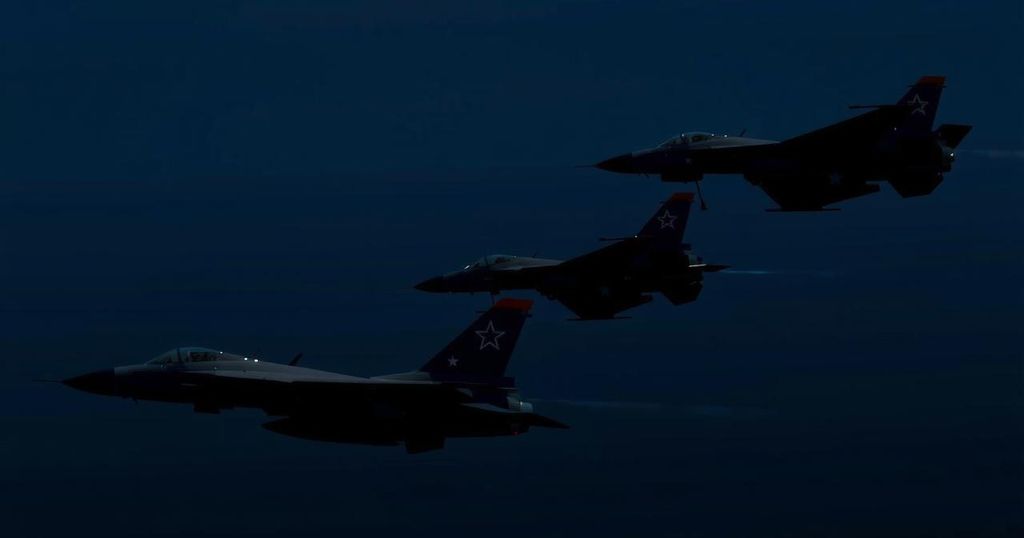China’s Military Showcase at Egypt Air Show: Opportunities and Challenges
The inaugural Egypt International Air Show concluded on Thursday, showcasing China’s military aviation capabilities with notable displays, including an extensive presentation of the advanced Y-20 transport aircraft and the J-10 fighter jets—the latter being showcased for the first time in Africa. This significant presence underscores China’s escalating technological development, military aspirations, and influence across the Middle East and North Africa, as observed by industry analysts.
Kostas Tigkos, a manager with Janes, a leading global military intelligence organization, elucidated that China’s foray into the Middle East is indicative of its intent to tap into this strategically vital market. He noted, “This marks another milestone in China’s military diversification and opens doors to enhanced collaboration in security domains, investment opportunities, and new avenues for trade beyond traditional relationships.”
The importance of this region to China cannot be overstated, as it represents its highest rate of bilateral trade growth and supplies half of its imported oil. Consequently, Beijing is keenly interested in developing economic partnerships, security alliances, and supply chain logistics in the region.
The exhibition drew attention from various nations, particularly Saudi Arabia and the United Arab Emirates, which are increasingly procuring military equipment, including drones and missile systems, from China. Egypt has also expressed interest in acquiring the J-10 fighter jet to broaden its military supplier base and enhance its defense capabilities. This sentiment was echoed during a July meeting between Lieutenant General Mahmoud Foaad Abdel Jawad, Egypt’s air force commander, and General Chang Dingqiu, his Chinese counterpart, which was described as a significant step towards strengthening military cooperation between the two nations.
During the event, Egyptian President Abdel Fattah el-Sissi attended the opening ceremony and toured the Chinese display, where striking images of the Y-20 and J-10 aircraft flying over the Giza pyramids were showcased, highlighting their operational range and capabilities.
The Y-20, known as “Chubby Girl,” is touted for its ability to lift up to 66 tons and transport heavy military hardware over a distance of 7,800 kilometers. The J-10, referred to as “Vigorous Dragon,” is equipped to engage in air-to-air and ground attack missions, drawing proximity to the US F-16 Fighting Falcon in terms of functionality. Wendell Minnick, editor of the “China in Arms” newsletter, remarked that these aircraft are pivotal for China’s strategic military reach beyond its shores, likening them to the U.S. heavy lift and long-range transport systems.
Despite the excitement over the Y-20 and J-10, defense analysts remain skeptical about the immediate demand for these military aircraft in the region. While the aircraft may be more economically priced compared to their U.S. counterparts, experts argue that they may lack the technical performance and resilience required in hostile environments. Minnick expressed doubts about demand, stating, “The Y-20 requires extensive training, technical support, and components that most Middle Eastern nations may struggle to acquire.” He also highlighted that countries such as Iran might not afford these purchases, while others like Saudi Arabia prefer Western manufacturing.
Furthermore, experts believe that while there are prospects for future business relationships involving training and support, finding buyers for the Y-20 and J-10 may be challenging in the immediate term. Tigkos offered insight into long-term potential, emphasizing that successful deployments could foster trust and wider market engagement for China in the regional aerospace sector.
The Egypt International Air Show brought together approximately 50 aircraft, representatives from 100 countries, and 300 companies, including prominent U.S. defense contractors such as Boeing and Lockheed Martin. As the region stands at a crossroads in military alliances, the future of China’s military exports will depend on navigating both competitive and cooperative opportunities in these evolving geopolitical landscapes.








Post Comment